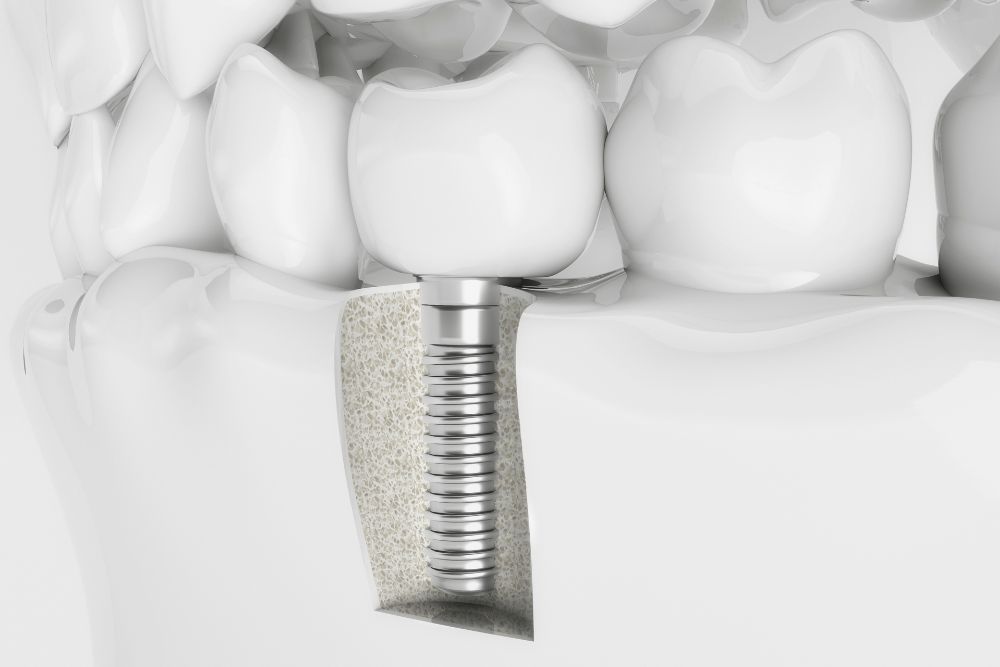Dental implants
The dental implant: A stable and robust solution for life

What is a dental implant?
A dental implant is an artificial root usually made of titanium.
Titanium is a strong, light metal that is well tolerated by the body. Due to its high biocompatibility, rejection reactions or allergies are rare (or non-existent).
The implant will be placed in the alveolar bone to replace one or more missing teeth. A fixed dental prosthesis (often a ceramic crown or denture) will rest on this artificial root.
Replacing teeth is not only a cosmetic act. A missing tooth can prevent proper chewing and can cause adjacent teeth to shift and lie down or rise up.
This results in an increased risk of cavities and a loss of the natural meshing of the teeth. In addition, if no tooth replacement is performed, the bone will progressively resorb preventing the subsequent placement of an implant.
A bone graft will sometimes be necessary.
Implant-supported restorations are more comfortable than removable dentures. Unlike traditional bridges, implants avoid mutilating neighboring teeth.
In addition, they provide additional support rather than resting on the remaining teeth. If the patient already has a removable prosthesis, implants provide much greater stability to the prosthesis.
The main condition is to have a bone in good condition. Certain techniques can compensate for the lack of bone (shorter but wider implant, bone graft, sinus filling, etc.). The contraindication factors must be discussed with your practitioner.
A pre-implant assessment must be performed before any implant placement. It consists mainly of a history, a clinical examination and X-rays to evaluate the quality and quantity of the bone.
Legally, any dentist, stomatologist and maxillofacial surgeon can place implants.
Nevertheless, a thorough university education in implantology or periodontology is a guarantee of safety and quality of treatment.
It is important to prepare the future implant site as well as possible before placing an implant.
During any dental extraction, there is a physiological bone resorption that will decrease the height and thickness of the bone.
This is why it is important to perform the dental extraction in the best conditions and sometimes to perform an alveolar preparation during the same operation.
In cases where the bone volume is insufficient, there are bone grafting techniques to restore it.
Recent progress ensures effective results with reduced interventions.
An implant rehabilitation is generally performed in 3 stages: The placement of the implant, the healing phase and the placement of the crown or prosthesis.
Implant placement: The practitioner performs a local anesthesia as for a classic dental care. The placement of the implant is completely painless. He then prepares a housing to place the implant. He closes the gum.
The waiting phase between the placement of the implant and the placement of the crown or the prosthesis on implants is intended to allow the healing of the bone around the implant: it is the osseointegration.
After a period varying, according to the cases, from 2 to 4 months, the practitioner proceeds to the impressions in order to carry out the crown or the prosthesis on implant.
Is an implant reimbursed?
This operation is not reimbursed by the Social Security, except for certain exceptions (for example: placement of 2 mandibular implants in a patient over 70 years old).
Some mutual insurance companies reimburse the treatment completely or partially.
In fact, there are many dental insurance companies that cover additional dental expenses.
For more information, please contact your health insurance company.

